#covid-19 and retail
Explore tagged Tumblr posts
Text
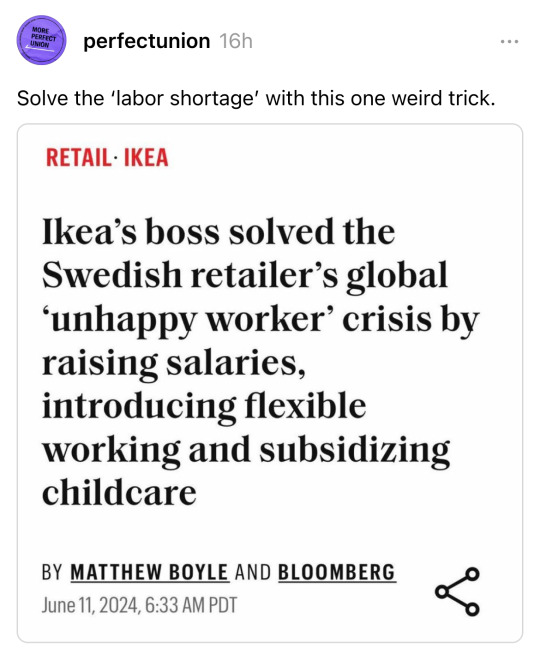
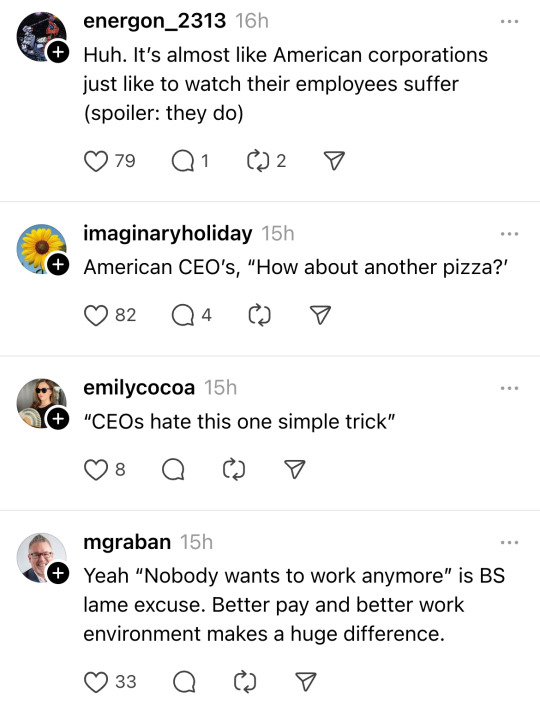
#employee turnover#increasing wages#worker flexibility#staff workflow#ikea#employee retention#retail industry#covid-19 pandemic#inflation impact#union conflicts#employee benefits#jon abrahamsson ring#inter ikea group#employee satisfaction#global quit rate#childcare benefits#labor market#labor disputes#retail sector#workplace changes
148 notes
·
View notes
Text
So there's this post about how customer\employee relationship has gotten worse since Covid. And I do believe that but it's also like that but in other areas, it has also become more of this "me vs everyone" in areas we might not have noticed yet.
A big one for my city is driving.
I live in a small college town so the occasional bad drivers from out of town was no surprise but that was usually the number one complaint of "stupid out of towners" or "damn college kids" don't know how to drive around here.
But post Covid? Holy shit! It seems like it has gone mad!
Nobody goes when the light goes green because so many red light runners. And i don't mean that usual prick, last second, squeezing in.
No.
I mean the light has been red for several beats, it has been green the other way for a beat and half where even the slow trucks\sunday drivers\slow reaction people can be half way into the intersection and there is still a red light runners coming through.
So now everyone waits like 2 or 3 solid seconds before moving just in case that asshole is around and guess what? there usually is.
On top of that, I have seen someone do this, in front of a cop. Fucker did nothing. Not even a flash of the lights warning.
Or people in the wrong lane but they need to turn, they are one just lane over, so they will just turn anyways even if there is already cars in the turning lane, even if their is 1 line to turn on to.
Or the road merges, everyone knows this road goes from 2 to 1 lane so zipper merge but not this asshole, they have to gun it to get 1 more car length ahead in bumper to bumper traffic just to slam on their brakes and turn at the first street.
People flying through school zones, not even slowing down, just keep doing the regular speed limit.
Pedestrians too, just walking anywhere they like, crossing the road like there's no cars on 3 lane wide roads, just walking, taking their time as cars have to slow down, sometimes stop or on smaller, residential streets, just walking in the middle of the road and refusing to move left or right for traffic.
It's just madness sometimes driving through town, and that's ignoring the other major issues you'll see when driving through the town.
I think it's 2 parts, 1) people got used to the more empty streets and now feel like they, personally, own the streets, and others are now invading their space 2) something about Covid just really did a number on everyone, not sure if it was the isolation that made people forget to be kind\general rules of society or if it the Mask Wars that started the "us vs them" mentally people seem to have post-covid.
#rant#rant post#covid#covid 19#driving#customer service#retail#like i never used to mind driving pre covid#but post covid is horrible#i get annoyed by somebody everyday#running red lights#swirving in their lanes#not knowing how to fucking zipper merge#and i have a tiny commute too#only like 10 mins
7 notes
·
View notes
Text
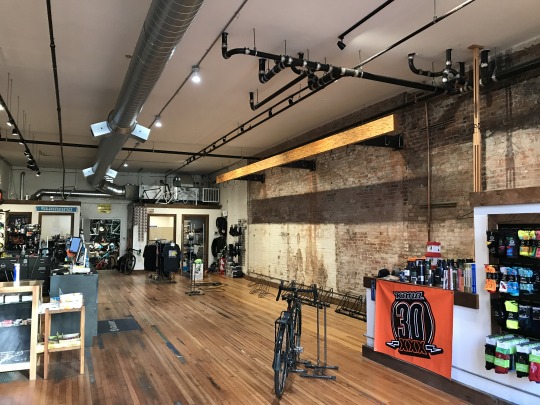
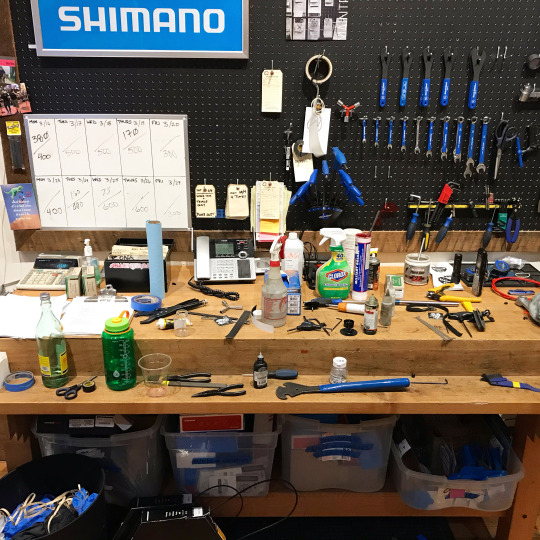
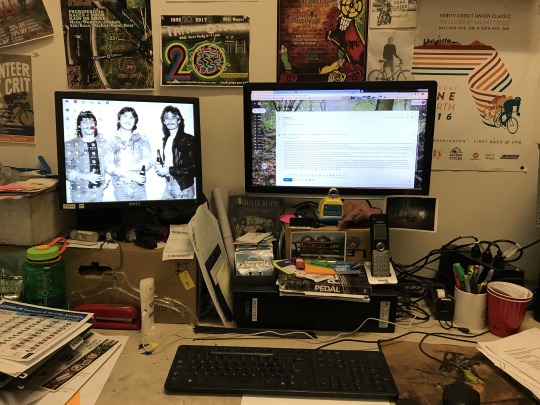
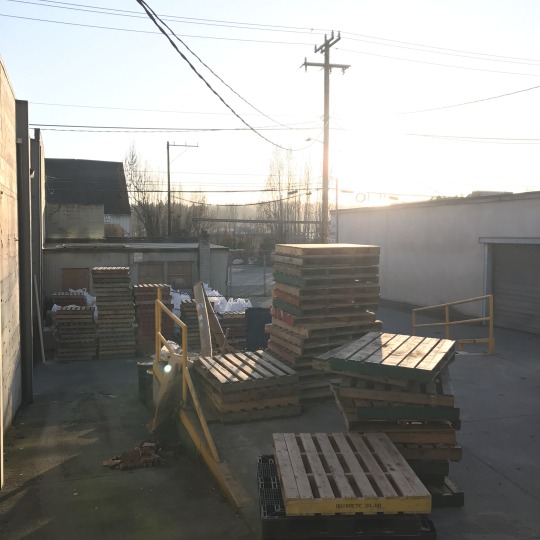
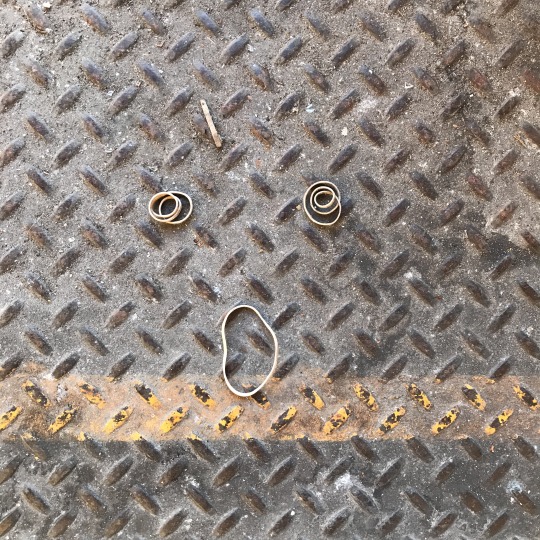
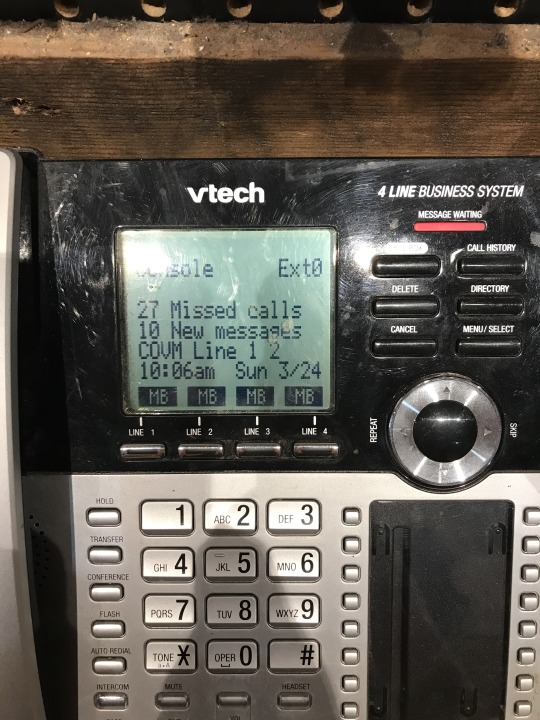
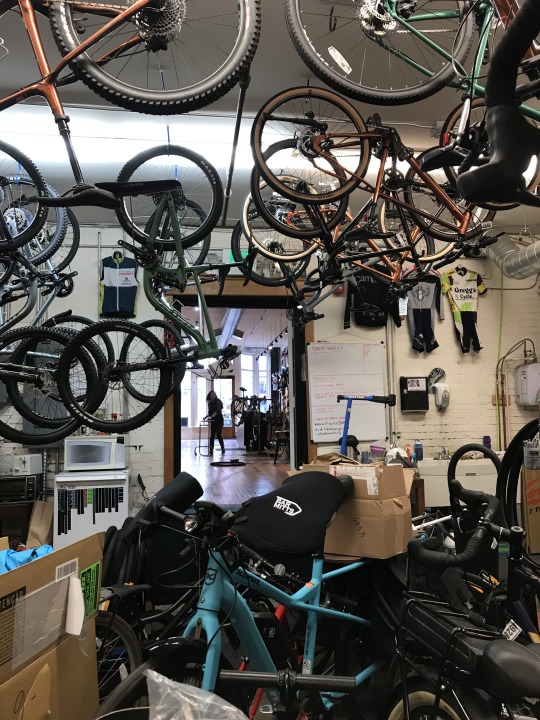
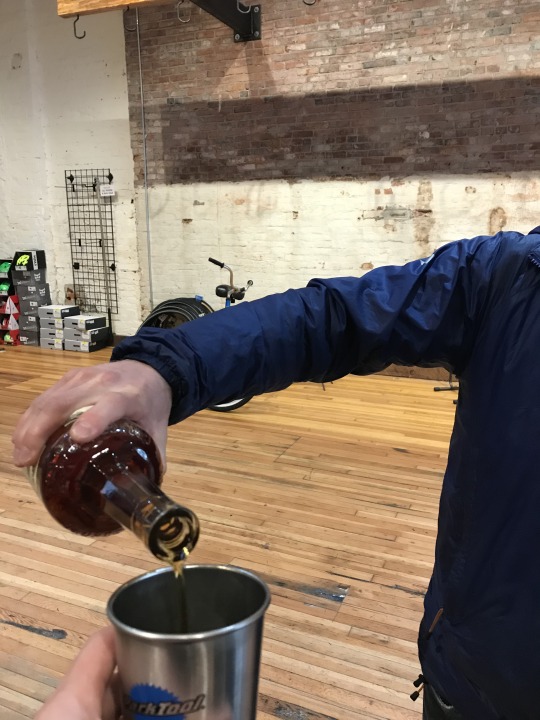
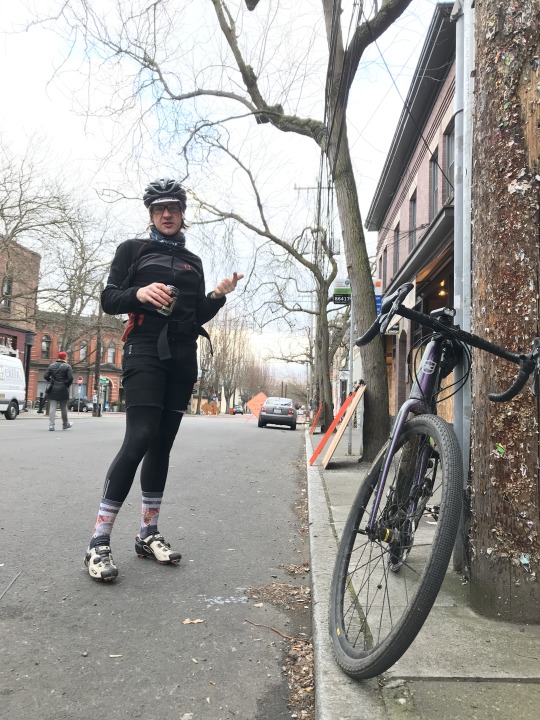
Bike Shop Life. March, 2020.
#ballard#seattle#bike shop life#bike shop#pandemic#covid 19#photography#ballard ave#bicycles#retail#iphone photos#cell phone photos#digital photography#kona bicycles#ride bikes#west seattle
3 notes
·
View notes
Text
Customer at work, saying mental health issues got worse after Covid.
Me: well, on top of social isolation, it's been found that repetitive contractions that it does damage and alter brain chemistry.
Customer: *does the conspiracy theorist eye flash* wonder how they actually got covid
Me: they were exposed and contracted it??
Customer; yeah sure that's exactly how *conspiracy theorist eyebrows*
#autism#adhd#audhd#actually autistic#conspiracy theories#conspiracies#covid 19#customer service#retail
2 notes
·
View notes
Text
Swimming through Cultural Slime
Two restaurants, one time for brunch, the second for an early dinner. Four retail stores, which included a stop at Target. One stop for gas. All that in less than twenty miles, round trip. Our smiles, sincerity, and caring attitude, netted us various replies, like “Wow! Thank you for being so considerate.” “I really appreciate your being so cool about this.” And my personal favorite, “You guys…

View On WordPress
#American culture#COVID-19 impact#Cultural attitudes#Customer service#Emotional trauma#Entitlement culture#Kindness in public#Politeness norms#Post-pandemic society#Public behavior#Restaurant etiquette#Retail experiences#Social behavior#Social interactions
0 notes
Text
Still mad that my Internet was being dodgy during covid so I couldn’t stream on twitch, I could be famous by now man
0 notes
Text
Party City Announces Closure After 40 Years of Celebrations

In a significant development for the retail industry, Party City, the popular party supply chain, has announced that it will be shutting down its operations after four decades of serving customers. The news has sent shockwaves through the community and raised questions about the future of retail in a changing economic landscape.
The Closure Announcement
According to a report by CNN, Party City CEO has confirmed that the company will be closing its stores following a prolonged period of financial challenges. Despite having been a go-to destination for party supplies and decorations, the chain has struggled to recover from the impacts of the COVID-19 pandemic, which severely affected foot traffic and sales. The announcement comes as part of a broader restructuring effort aimed at addressing ongoing profitability issues.
read more in google news
The closure will affect hundreds of locations nationwide, leading to the loss of jobs for many employees who have dedicated years to the company. As reported by Yahoo Finance, the decision to shut down was not taken lightly, and the company aims to assist its employees during the transition, offering severance packages and support for those impacted.
Financial Struggles and Market Challenges
Party City’s decline can be attributed to several factors, as highlighted by Fox Business. The rise of e-commerce and changing consumer preferences have significantly shifted how people purchase party supplies. Many customers have turned to online retailers for convenience, leading to decreased sales for brick-and-mortar stores. Additionally, the company faced increased competition from discount retailers and supermarkets that began offering similar products at lower prices.
The combination of these market pressures and the ongoing challenges stemming from the pandemic ultimately culminated in the decision to cease operations. Party City has been a fixture in the retail landscape, known for its wide array of party supplies, costumes, and festive decorations, making the closure a poignant moment for many loyal customers.
read more in google news
Community Impact and Reflections
The news of Party City’s closure has elicited a range of reactions from the community. For many, the store has been a staple for celebrations, from birthdays to holidays, and its absence will be felt deeply. Local residents and party planners alike have expressed their sadness over the loss of a store that has contributed to countless celebrations over the years.
As the retail sector continues to evolve, Party City’s closure serves as a reminder of the challenges that traditional retailers face in an increasingly digital world. The company’s journey reflects broader trends in consumer behavior and highlights the critical need for businesses to adapt to changing market dynamics.
Conclusion
As Party City prepares to close its doors, the retail industry watches closely, pondering what this means for the future of brick-and-mortar stores. The decision marks the end of an era for a brand that has been synonymous with celebration and joy for millions. While the company seeks to navigate this transition, the memories of countless parties and events will remain a testament to the impact Party City has had over the last 40 years.
#party city#Retail Closure#Business News#Party Supplies#Consumer Trends#E-commerce Impact#COVID-19 Effects#Job Loss#Financial Struggles
0 notes
Photo
I worked at Walmart during the "lockdown." I watched as people spent their COVID relief money on flat screen TVs and new phones. I watched people get so unnecessarily angry because we shut down our fitting rooms, so they took the merchandise to the restrooms, which they wound up stealing instead of just trying on. People panicked when our shelves weren't restocked fast enough. I'd never seen a shortage on toilet paper like this but it was so bad, we had to limit how much each customer bought. Our workers were quitting or taking paid quarantine while the rest of us who kept our heads stayed at work and dealt with the bullshit for a paycheck. Watching society collapse on itself was both fascinating and nerve-wracking. Because I was an "essential worker," most of the customers took out their frustrations on us, not knowing or even caring that we were working whole departments by ourselves because we were grossly understaffed and underpaid.
Here's the shitty thing: my husband and I finally caught COVID after 3 years of working through the pandemic. When we told our bosses at work, we weren't given a paid quarantine. In fact, we weren't given an unpaid quarantine. IN FACT, they said that taking a home test wasn't good enough proof, that it could have been a false positive. So we went to Walgreens and had a test done for free, and it was positive. I sent a screenshot of the emails we received to our bosses. THEN, when we had to get in touch with Sedgwick for LOA, THEY gave us a hard time too, stating that we needed to give them a doctor's name and the health facility where we got our tests taken. I explained we had it done at a Walgreen's and not s clinic, and the lady said it was invalid, that we had to go somewhere else to get a test taken. Keep in mind, I HAVE NEVER FELT SICKER, and we had already dealt with enough bullshit and been sick for 3 whole days at this point. Management told us they expected us to be back to work 5 days after we showed our first symptoms, that should have been enough quarantine time. So I went back to work, still sick with COVID, and the whole time, I felt on the verge of collapse. They finally sent me home and I explained I wouldn't be coming back until we were better. (My husband ran a fever of 106!) To which management replied that our days would be unexcused if we didn't finish our Sedgwick paperwork and would be pointed for all of the days we missed.
Needless to say, we quit. He worked there for 8 years and I worked there for 4, and we quit just like that. We worked our asses off during the pandemic while so many of our coworkers took a paid optional quarantine which we opted out of, and once WE got sick, we were treated like we were liars or like we just didn't want to be at work. The pandemic did more than the above stated meme, it also showed you who was worth working for and who wasn't. Which employers would actually take care of their employees, and who didn't give a shit.

150K notes
·
View notes
Text
Medical care demands a safe, clean environment. With the rise of COVID-19 and antibiotic-resistant diseases, now more than ever, cleaning must go beyond appearances as a matter of community health.
So, how can you ensure that your ER, recovery rooms, hallways, kitchen, washroom areas, elevators—every floor in the hospital—are clean enough to conform to the standards of high-quality healthcare? With our commecial healthcare cleaning tools combined with the i-know kit, you can monitor the cleanliness of all touchpoint areas. See the best cleaning tools for hospitals, including our i-know test kit to determine if surfaces have been adequately cleaned.
With i-know, it only takes around 60 seconds to measure dirt levels on a surface. That speed and accuracy empowers cleaning teams with useful data to get objective feedback on the quality of their commercial cleaning practises.
#clean environment. With the rise of COVID-19 and antibiotic-resistant diseases#cleaning must go beyond appearances as a matter of community health.#recovery rooms#hallways#kitchen#elevators—every floor in the hospital—are clean enough to conform to the standards of high-quality healthcare? With our commecial healthcar#you can monitor the cleanliness of all touchpoint areas. See the best cleaning tools for hospitals#it only takes around 60 seconds to measure dirt levels on a surface. That speed and accuracy empowers cleaning teams with useful data to ge#Cordless vacuums#Disinfectant sprayers#Air purifiers for offices#Cleaning equipment for healthcare#Floor scrubber machines#Cordless vacuum cleaners for business#Disinfection systems for hospitals#Healthcare cleaning solutions#Educational facility cleaning tools#Hospitality cleaning equipment#Industrial floor cleaning machines#Retail cleaning systems#Best floor scrubbers for commercial use
0 notes
Text
Opinion Here’s how to get free Paxlovid as many times as you need it
When the public health emergency around covid-19 ended, vaccines and treatments became commercial products, meaning companies could charge for them as they do other pharmaceuticals. Paxlovid, the highly effective antiviral pill that can prevent covid from becoming severe, now has a list price of nearly $1,400 for a five-day treatment course.
Thanks to an innovative agreement between the Biden administration and the drug’s manufacturer, Pfizer, Americans can still access the medication free or at very low cost through a program called Paxcess. The problem is that too few people — including pharmacists — are aware of it.
I learned of Paxcess only after readers wrote that pharmacies were charging them hundreds of dollars — or even the full list price — to fill their Paxlovid prescription. This shouldn’t be happening. A representative from Pfizer, which runs the program, explained to me that patients on Medicare and Medicaid or who are uninsured should get free Paxlovid. They need to sign up by going to paxlovid.iassist.com or by calling 877-219-7225. “We wanted to make enrollment as easy and as quick as possible,” the representative said.
Indeed, the process is straightforward. I clicked through the web form myself, and there are only three sets of information required. Patients first enter their name, date of birth and address. They then input their prescriber’s name and address and select their insurance type.
All this should take less than five minutes and can be done at home or at the pharmacy. A physician or pharmacist can fill it out on behalf of the patient, too. Importantly, this form does not ask for medical history, proof of a positive coronavirus test, income verification, citizenship status or other potentially sensitive and time-consuming information.
But there is one key requirement people need to be aware of: Patients must have a prescription for Paxlovid to start the enrollment process. It is not possible to pre-enroll. (Though, in a sense, people on Medicare or Medicaid are already pre-enrolled.)
Once the questionnaire is complete, the website generates a voucher within seconds. People can print it or email it themselves, and then they can exchange it for a free course of Paxlovid at most pharmacies.
Pfizer’s representative tells me that more than 57,000 pharmacies are contracted to participate in this program, including major chain drugstores such as CVS and Walgreens and large retail chains such as Walmart, Kroger and Costco. For those unable to go in person, a mail-order option is available, too.
The program works a little differently for patients with commercial insurance. Some insurance plans already cover Paxlovid without a co-pay. Anyone who is told there will be a charge should sign up for Paxcess, which would further bring down their co-pay and might even cover the entire cost.
Several readers have attested that Paxcess’s process was fast and seamless. I was also glad to learn that there is basically no limit to the number of times someone could use it. A person who contracts the coronavirus three times in a year could access Paxlovid free or at low cost each time.
Unfortunately, readers informed me of one major glitch: Though the Paxcess voucher is honored when presented, some pharmacies are not offering the program proactively. As a result, many patients are still being charged high co-pays even if they could have gotten the medication at no cost.
This is incredibly frustrating. However, after interviewing multiple people involved in the process, including representatives of major pharmacy chains and Biden administration officials, I believe everyone is sincere in trying to make things right. As we saw in the early days of the coronavirus vaccine rollout, it’s hard to get a new program off the ground. Policies that look good on paper run into multiple barriers during implementation.
Those involved are actively identifying and addressing these problems. For instance, a Walgreens representative explained to me that in addition to educating pharmacists and pharmacy techs about the program, the company learned it also had to make system changes to account for a different workflow. Normally, when pharmacists process a prescription, they inform patients of the co-pay and dispense the medication. But with Paxlovid, the system needs to stop them if there is a co-pay, so they can prompt patients to sign up for Paxcess.
Here is where patients and consumers must take a proactive role. That might not feel fair; after all, if someone is ill, people expect that the system will work to help them. But that’s not our reality. While pharmacies work to fix their system glitches, patients need to be their own best advocates. That means signing up for Paxcess as soon as they receive a Paxlovid prescription and helping spread the word so that others can get the antiviral at little or no cost, too.
{source}
29K notes
·
View notes
Text
thinking about when I was an essential worker during COVID at CVS. I was like 18, and maybe a couple months into working there.
This old guy would come in like once a week to buy our big thing of cheap Italian table wine; he always wore a Veteran hat and came in the afternoon around the same time. I worked closing shifts so i rung him out like five subsequent times before this interaction.
One night he just seemed more comfortable with me, i don’t know. But I remember we had just put the plastic dividers up for COVID and his wine was too big to fit through the hole at the bottom— but this time we were laughing about it and passing the thing around where my scanner could reach. And laughing he says something like or to the effect of, “Yeah COVID’s fucked everything up. I guess i’m still here, but that wasn’t the plan.” I just laugh and vaguely agree how COVID has been fucking with school. And then he says, “Yeeup I was trying to go skydiving but we got grounded.” I ask if he’d ever done it before. He said something about the air force and piloting, I thanked him for his service and handed over his long ass receipt.
This is the thing I always think about, in the strangest calmest way he told me, “This time I was flying without a backpack though— one final ride. ” Then grabbed his wine off the counter and left.
I saw him many, many shifts after that, and he never mentioned anything vaguely suicidal or coded like that again. The entirety of COVID happened, I became a shift manager and moved to be more regularly stocking shelves than helping at the register. But I still saw the guy, I swear I would see him come in— literally until he didn’t. My mind blanked when i realized i hadn’t seen him in two weeks or so.
I asked my pharmacy tech work buds if they recognized the customer and if he ever picked up medication here. They didn’t know him, so I never found out what happened.
Believe this story or not, he’s one of the few customers I actually still think about all the time. I don’t really even remember his face, I can picture the veteran’s hat more clearly. I always wanted to know what happened, i tried remembering his phone number to look up his rewards account but that never turned anything up.
Where ever you are dude, hope you��re healthy or flying high man.
0 notes
Text
How Trump is reshaping reality by hiding data
Curating reality is an old political game, but Trump’s sweeping statistical purges are part of a broader attempt to reinvent “truth.”

Trump appears to be turning the federal government into its own 1984-style Ministry of Truth.

This is a gift 🎁 link so there is no paywall to read it. Below are some excerpts/highlights.
By Amanda Shendruk and Catherine Rampell | March 11, 2025 The Trump administration is deleting taxpayer-funded data — information that Americans use to make sense of the world. In its absence, the president can paint the world as he pleases. We don’t know the full universe of statistics that has gone missing, but the U.S. DOGE Service’s wrecking ball has already left behind a wasteland of 404 pages. All sorts of useful information has disappeared, including data on:

[...]

[See more under the cut.]
Three cases of legerdemath and other tricks up Trump’s sleeve
Deleting data isn’t the only way to manipulate official statistics. Trump and his allies have also misrepresented or altered data. Here are a few examples: 1. Incorrect data

Witness DOGE’s bogus statistics on its supposed government savings. The administration counts as “savings” some canceled contracts that had already been paid in full. Some canceled expenses were created out of whole cloth, such as $50 million supposedly spent on sending condoms to Gaza. 2. Misrepresented data

One of Trump’s favorite charts on immigration is riddled with errors. For one, it does not show the number of immigrants entering the United States illegally, as he claims, but the number of people stopped at the U.S. border. Similarly, when Commerce Secretary Howard Lutnick was recently asked how much DOGE funding cuts might reduce economic growth, he suggested that the agency might decide to change how economic growth is calculated so that the usual GDP report strips out government spending altogether. This would be an abrupt change to the standard GDP methodology that has been used around the world for nearly a century, but it would certainly make the DOGE cuts look less painful. 3. Altered data

When data doesn’t tell the story Trump wants, he fabricates it. In what became known as “Sharpiegate,” Trump notoriously altered a map of Hurricane Dorian’s path in 2019.


Likewise, before Jan. 30, a National Institutes of Health website documenting years of spending data included a category called “Workforce Diversity and Outreach.” That line item is now gone — even though the money was, indeed, spent.
Taking cues from authoritarian illusionists
Such actions are straight out of authoritarian leaders’ playbooks. Research suggests that less democratic countries have been more likely to inflate their GDP growth rates and manipulate their covid-19 numbers. Statistical manipulation is also more common in countries that shun economic openness and democracy. [...] To be clear, efforts to rewrite reality via statistical manipulation often don’t work. If anything, China’s data deletions reduced public confidence in the country’s economic stability. (No one hides good news, after all.) The Trump team’s efforts to suppress nettlesome numbers have similarly eroded trust in U.S. data. Only about one-third of Americans trust that most or all of the statistics Trump cites are “reliable and accurate.”

Meanwhile, missing or untrustworthy data lead to worse decisions: Auto companies, for example, draw on dozens of federally administered datasets when devising new car models, how to price them, where to stock and market them and other key choices. Retailers need detailed information about local demographics, weather and modes of transit when deciding where to locate stores. Doctors require up-to-date statistics about disease spread when diagnosing or treating patients. Families look at school test scores and local crime rates when deciding where to move. Politicians use census data when determining funding levels for important government programs.

And of course, voters need good data of all kinds when weighing whether to throw the bums out. Many of us take the existence of economic or public health stats for granted, without even thinking about who maintains them or what happens if they go away. Fortunately, some outside institutions have been saving and archiving endangered federal data. The Internet Archives’ Wayback Machine, for instance, crawls sites around the internet and has become an invaluable resource for seeing what federal websites used to contain. Other organizations are archiving topic-specific data and research, such as on the environment or reproductive health. These are critical but ultimately insufficient efforts. At best, they can preserve data already published. But they cannot update series already halted or purged.... Some private companies may step in to offer their own substitutes (on prices, for example), but private companies still rely on government statistics to calibrate their own numbers. Much of the most critical information about the state of our union can be collected only by the state itself. Americans might be stuck with whatever Trump chooses to share with us, or not.
#government data#donald trump#hiding government data#manipulating government data#manipulating the truth#autocracy#1984#ministry of truth#amanda shendruk#catherine rampell#michelle kondrich#sethinsua#the washington post#my edits
197 notes
·
View notes
Text
Americans are taking to the streets and showing up in US cities by the thousands to protest a plethora of President Donald Trump’s second-term policies, and to challenge the power that Trump has bestowed upon Elon Musk to disrupt the federal government. Public outcry and acts of civil disobedience have become more commonplace over the past several years, as citizens have challenged Trump’s threats to women' s rights, travel bans from foreign nations and deportation policies, police brutality against Black Americans, and the US Supreme Court’s overturning of Roe v. Wade.
Now the protests, which include the Tesla Takedown movement and a nationwide mass-action called Hands Off, are targeting a hostile takeover of the government and broader threats to American freedom. (Trump has also seriously threatened longstanding free-trade agreements and single handedly taken down the US stock market in the process.)
This WIRED guide to safe protesting was originally written in 2020 during the nationwide outcry over police brutality, which overwhelmingly targets Black people like George Floyd, Breonna Taylor, and Tony McDade. We’ve now updated this guide to include advice specific to mass action, your rights and protections as a US citizen, protesting in or around government property, and laws around defacing property (like, say, a Tesla).
If you're thinking about joining a protest near you, there are some crucial factors to consider: The US government is now allowing federal immigration agents to conduct sweeping raids, and ICE is reportedly detaining and deporting people in the US who are here on legal visas, including many students. And, while police brutality is an abstract concept for some, it’s a stark reality for others. There are other ways you can contribute if you don't feel safe protesting or are otherwise unable to physically do so. You can also donate time to community groups, drop off supplies for protests, or contact local legislators. Now, more than ever, it’s crucial to put pressure on our legislators.
That being said, protesting is a right of all Americans under the First Amendment (more on that below). Before you head out, you should know that police across the country have acted with unnecessary force, including driving vehicles through crowds, partially blinding a photojournalist, and macing children. The list goes on and on.
If you still want to join in, we've gathered some advice, as well as a list of items you may want to bring with you. Be careful, and stay safe.
What to Bring (and Not Bring) to a Protest
It's smart to have supplies on hand for a day of protesting. We recommend the following. You probably have everything you need around the house, and if not, these items will likely be accessible at your local stores. We've included some links to online retailers for your reference.
A bag and/or backpack: You'll need something small and durable. I, Louryn, use a cheap daypack from Walgreens for most supplies, and I also strap on a belt bag, which I use to hold the essential items I'd need if I were to lose my backpack. Use whatever you own that lets you keep your hands free. If you don't have anything, we have a list of our favorite fanny packs. And while your bag should be big enough to hold all the supplies you need, be sure to avoid anything too bulky.
Water: There's a good chance that your protest will include a march, so you need to pay attention to proper hydration. Carry drinking water. Bring the biggest bottle that you can fit in your bag. Water can also be used to clean wounds and flush the eyes of anyone who's been hit with chemical gas or pepper spray.
A face mask or bandana: When we first wrote this guide in 2020, we advised wearing masks because of the Covid-19 pandemic. That’s less of a concern for many people now, but you still may want to take precautions and cover your face with a mask or bandana. Face coverings also have the benefit of shielding your identity from cameras and police surveillance. (We have a separate guide about digital privacy during protests.). Bring an extra mask if you have one.
A hat and/or sunglasses: Aside from shielding you from the sun during a long day of marching, hats and sunglasses can obscure your face from surveillance and protect your privacy. If you wear a hat, and you're interested in further protecting your identity, keep the brim low.
Snacks: You are likely in for a long day. Pack lightweight, nutritious, protein-rich snacks. Jerky, energy bars, and nuts are all good picks.
Protest signs: If you want to carry a sign, there are some things to consider. Ensure that your slogan is in big, bold letters that can be easily read from far away. Short and punchy sayings are arguably better than a block of script. Poster board is flexible, but stiffer foam-core board is more durable. You can affix paint-stir sticks or other flat, wooden sticks to the sign using strong tape to create a handle. You might want to make extras to hand out to fellow protesters. Don't litter—when you're done with your sign, dispose of it properly, or donate it to another protester.
Suitable clothing: It's a good idea to wear all black, both because that's what the organizers of most solidarity protests suggest and because it helps you blend in with a crowd. Privacy experts also recommend that you cover any tattoos, if you can, and that you hide your hair if it's dyed a distinctive color.
A change of clothes: If you're protesting on a particularly hot day, you may want to have extra clothes. These can also come in handy if you're exposed to substances that can hurt your skin or if you're splashed with paint, gross road water, or other people's sweat. I usually carry a pair of shorts, a tank top, and an extra pair of socks in my backpack.
Hand sanitizer: You might find yourself holding hands with a stranger, grabbing onto gunky street signs, or tripping and falling into a puddle. All these scenarios coupled with Covid-19 make hand sanitizer an essential thing to carry.
Good walking shoes: This is nonnegotiable. Wear closed-toe shoes that are broken in and good for walking long distances.
Your ID (maybe): If you're detained, not having your ID on you might keep you stuck for longer. However, in some states, you might not have to show the police your ID if they ask for one. Use your best judgment, and consider looking up the laws for your state for more specific guidance.
Your phone (maybe): To protect your privacy and prevent surveillance, the best thing you can do is leave your phone at home. Consider using a secondary or burner phone instead. If you want to bring your phone, avoid using traditional phone calls and texts if at all possible. Signal is a secure, end-to-end encrypted messaging app that offers the option to delete messages after they're sent. You should also disable biometric unlocking, like FaceID or fingerprint features, and use a six-digit passcode instead. If you do need to carry your primary phone, keep it turned off until you absolutely need to use it. This will make it harder for law enforcement to track your movements, since law enforcement officials can collect or purchase data that can tell them which devices were at a protest they’re monitoring, and who those devices belong to.
Cash: Just like your phone can leave digital breadcrumbs indicating your whereabouts, using your debit or credit card will make it easier for the authorities to track your movements. Instead, bring cash. Separate your bills; stash some in your bag, and keep some on your person, either in your shoe, your bra, your pants pockets, or somewhere else secure.
A power bank: If you or members of your group will have a phone, you need to make sure that you have a way to charge devices. Other protesters may need to charge their gear as well. If you don't have one already, I really like this option from Anker. The company also makes another good power bank that's a bit smaller.
Other things you may want: A cooling towel. Duct tape or gaffer's tape. A flashlight or a headlamp. Ibuprofen. Goggles. Blister-prevention patches. Extra hair ties. A pen and paper. A Sharpie. A laser pointer. Bandages or other first aid supplies. Ear plugs. Saline solution. Extra face masks. A copy of emergency phone numbers and a card declaring necessary medical information that someone may need to know if you're unable to tell them yourself (for example, if you have asthma or if you're hard of hearing). Medications that need to be taken on a schedule (in a labeled prescription bottle if possible) with the understanding that you may be away from home much longer than anticipated.
Before You Leave
We asked some organizers and civil action experts about key things to understand about protesting. Here's their advice.
Educate Yourself
Do not go to a protest without knowing what it is you're fighting for. Don't show up and ask someone there to educate you. If you're an ally, do the work yourself and study as much as possible—not only about the actions you're protesting but the context around them. You might know that reproductive rights are threatened, but do you know about the historical fight for access to abortion in America? There are several books you can read right now to gain more knowledge about this topic. If you’re pissed at Elon Musk, it helps to have a good grasp of all the ways the administration is dismantling federal agencies in this country.
Get in the Right Mindset
Mental preparation is important. Protesting can be physically grueling and emotional taxing. You may experience sheer joy. You might cry. You might get angry. You might get scared. Most likely, you'll experience all of the above. Take the time to prepare yourself before heading out. Make sure to drink some water, apply sunscreen, and eat a meal.
Realize It’s Not About You
One of the primary reasons to attend a protest is not just to stick it to the man and to take a selfie while doing it, but to be present for others. Show up ready to listen. Be prepared to amplify what people are saying. If you aren't comfortable with potentially physically intervening, shielding vulnerable protesters from police violence, and listening more than you speak, your efforts to be an ally are likely better spent elsewhere.
Tony Williams, a member of MPD150, a Minneapolis-based coalition that has studied the history of police activity and seeks police-free alternatives to community safety, shared crucial advice for anyone who is not personally impacted by current events, but who wants to attend a protest. (Of course, the dismantling of democracy in the US is something that affects all of us.)
“The most important thing to realize,” Williams says, “is that you’re showing up in solidarity with other people. It’s not your job to decide how things should go. It’s your job to show up and listen and be in support. Deprioritizing yourself is an incredibly important part of the experience.”
Know Your Rights
In the US, it’s entirely within your rights to peacefully demonstrate in public. The basic act of assembling and protesting the government’s actions is unquestionably protected, according to the First Amendment Coalition, a California nonprofit that’s committed to protecting freedom of speech. Also, as a general matter, “people have the right to film or otherwise document things that are happening in the public space,” says David Snyder, director of the FAC. “If police demand that you turn over your notes, I would say that you can assume they don’t have the right to seize that.”
That said, if it comes down to a matter of force and you are physically outmatched, you may have to weigh the risks to your immediate personal safety, potentially have your notes or phone stripped from you, and pursue legal action later on. Also, Snyder notes, the First Amendment to the Constitution does not protect protesters who engage in unlawful activity, which includes destroying property or assaulting other people.
According to the ACLU, you are able to protest at government buildings with a few caveats. Your free speech rights are the strongest when you protest in “traditional public forums” like public streets and parks or on sidewalks outside government buildings. Also, you cannot block access to government buildings or otherwise get in the way of what activities are being performed at the building. (Other than being very noisy, of course.)
Form a Group
If you can avoid it, don't protest alone. It's important that you go with at least one other person so you can have each other's backs. There is strength in numbers. Know your "roles" within the group before you go so you can be prepared for anything. For example, maybe one of you is prepared to drive the group home if the situation gets dicey, maybe one of you has first-aid training, or maybe one of you is hyper-observant and prepared to monitor your surroundings to keep tabs on the vibe. Stay close to your group. Meet up beforehand, stick together the entire time, and leave the protest together. If you don't have a group, check social media sites—there are probably discussions where you can find people to meet up with locally.
Make a Plan
There will be a lot of people and a lot of emotions. You need to have a plan for what to do if the situation escalates. Pick a spot to meet if your group gets separated for a certain amount of time. (For example, if you get separated for more than 30 minutes, you meet back at a designated street corner.) It might be smart to have a few spots to meet at in case one is inaccessible. You should also have multiple routes planned for if you need to leave and streets are blocked off. Is there a curfew where you live? Have previous protests in your city escalated to violence? Will there be portable bathrooms stationed along the route, or should you map out places to relieve yourself after chugging water all day? Prep a plan.
Take Out Your Contact Lenses
If you're exposed to tear gas or pepper spray, contacts will make the experience much worse. Wear glasses if you have them. If you wear contacts, protect your eyes with sunglasses at the minimum, though ideally you'll be wearing goggles or keeping them handy. For the same reason, avoid wearing makeup or oil-based products like lotions, as the irritants in dispersion measures deployed by police can stick to them.
Write Down Emergency Numbers
Write down your emergency contacts' information. Write down the number of emergency legal counsel—several law firms offer pro bono representation for arrested protesters. Research the firms in your area. You may also want to write down the number of a local bond fund. You should have two copies of these phone numbers on your person—write them in the notepad stashed in your bag, on the hem of your shirt, or on a notecard that you keep in your pocket. As a redundancy, you can also write them somewhere on your body (like your forearms), preferably in permanent marker.
While You’re at the Protest
Once you arrive and join in with your fellow protesters, follow this advice on how to behave and how to stay safe.
Study Your Surroundings
You can designate a certain person in your group to make this a top priority, but regardless of who you're with, you should maintain awareness of what's going on around you. This is important for numerous reasons. Is someone wearing steel-toed boots, a colored armband, and a hearing device, and also showing the outline of handcuffs in their pocket? That person might be an undercover cop. Is someone carrying a bag of supplies emblazoned with a big red cross? They might be a street medic. Did a protester fall down and get hurt while marching? Open eyes and ears will help you react more quickly when needed.
Help Those Around You
If you're marching, you're probably going to be in close proximity to a few dozen other protesters. These are the people you'll be chanting with, walking with, and closest to if the situation escalates. Be friendly with them. Offer them water if you've got extra, or hold their stuff while they tie their shoes. Solidarity can start small. Remember that you're in a massive crowd; assume your actions are being watched and that your words are being listened to.
Don’t Vandalize a Tesla
So you want to vandalize a Tesla. Well, let's start with the warning that WIRED officially encourages you not to do that. Even if you feel Teslas are extremely punchable these days because of their association with Elon Musk, vandalizing or breaking somebody else's property is, yes, against the law and you may face fines or legal action for doing so.
It's also important to keep in mind what happens in the aftermath of a Cybertruck windshield smash or sprayed-painted F-you to Elon. First off, you might get spotted by Tesla’s built in cameras. Getting caught carries more risk than normal, as the FBI has investigated attacks on Teslas as “domestic terrorism.” You could also draw the ire of extremists out there simping for Elon. Also, if you damage a Tesla, the owner will likely take the vehicle to a Tesla facility to get it fixed. That means more money going back to Tesla and to Elon.
That said, stigmatizing Teslas seems to be working as a form of protest against the richest man in the world. Tesla sales have slumped since Musk started DOGE’s raids of federal agencies. It also helps that lots of Teslas have been recalled for multiple very dumb reasons. If you want to actively protest Tesla dealerships, Action Network has been organizing peaceful protests of dealerships around the world.
Consider the Ethics of Taking Photos
It is your right to take photos at any protest in the streets or on public property. However, a protest is not a social media photo op. You should avoid taking photos of protesters that clearly show identifying information like their faces or their tattoos, since those photos could make them vulnerable to abuse or retaliation. Law enforcement may also respond with force if you point your camera at them, even though it is well within your rights to film their actions.
A Note on Engaging With the Police
If you're white, you can use your privilege to your advantage. Your presence in the crowd can prevent more police brutality against people of color and Black people in particular. You can shield people of color with your body if necessary and if you're comfortable doing it. You can also film arrests and police activity in general—it's your right to do so. But we can't prepare you for every situation you'll encounter. Study up on the effects of the nonlethal weapons that could be used against you. Do what makes you comfortable and what makes sense at the time.
What to Avoid
When you're protesting, the actions you don't take can be just as important as the actions you do. Here's some advice about what not to do while demonstrating.
Don’t Run
Humans, just like other animals, can be profoundly influenced by this tricky thing called collective behavior. When you're in a group, your brain takes cues from said group, and you'll react to things based on how the group reacts. This is why, if someone starts running while you're in a crowd, you automatically get the urge to run as well. You might not even know why they're running, but a message in your brain says, "OK, it's time to go." Running also draws attention to yourself and those around you, which isn't ideal at a demonstration where protesters are being targeted for violence.
For these reasons, it's important that you refrain from running while protesting—you might incite a panic, hurt someone, or hurt yourself. If you need to move quickly, that's OK, but try to avoid running if you can help it. If you need to leave the larger group, move quickly and calmly to the edge of the crowd, out of the throng of people. When returning home, try to find a side street or a route that's out of the way, and stay with your smaller group.
Don’t Police Other People’s Behavior
You are going to see a lot of folks behaving in a lot of different ways. If somebody's behavior makes you uncomfortable to the point that you're considering asking a fellow protester to stop doing something, it's time to leave. This includes emotional public speaking, tagging, looting, vandalism, or provoking the police. If you aren't comfortable with what's happening, take that as your cue to head home.
What to Do If …
We can't prepare you for every possible scenario. In unknown situations, your common sense and your best judgment should guide you. But for the circumstances listed below, these tips may help you form a plan.
… You’re Exposed to Tear Gas
Tear gas is a thick, powdery fog that sticks to moisture like saliva, sweat, tears, and mucous membranes and causes an intense burning sensation. If gas is used, it's important to stay calm, because panicking will worsen the effects. Follow airplane rules: Help yourself before helping others. If a tear gas canister is deployed, move away from the cloud, quickly and calmly. Try to keep your breathing slow and even. If you're able, try to help those around you move away from the cloud. Tear gas is heavier than air and eventually falls, so move to higher ground if you're able.
You'll need to flush out your eyes. The best thing to use for this is water. Protesters and street medics have used what's called a LAW solution, which is a mixture of 50 percent unflavored liquid antacid and 50 percent water.
Protesters and street medics have also used a baking soda solution consisting of a teaspoon of baking soda for every 8.5 ounces of water. These solutions are fully effective only if they are thoroughly mixed. Blinking rapidly encourages natural tear production and can help flush the eyes. Do not use milk; it's less effective, can spoil quickly, and can cause infections, especially in eyes. You should also blow your nose and spit—and avoid sniffing or swallowing, as this may worsen symptoms. Change your clothing as soon as possible. Take a shower as soon as possible too, but use cold water, as hot water can make the burning sensation worse.
… You’re Exposed to Pepper Spray
Some of the same advice applies here. Move away quickly and try to remain as calm as you can. Change your clothes as soon as you can. Avoid touching your face or any other area that was exposed. Pepper spray is oil-based, so it can be trickier to remove, and it spreads over the skin easily. Water will help with symptoms, but it won't remove the irritating oils. LAW solution, baking soda solution, or diluted "no tears" shampoo are more effective.
… You Encounter a Violent Police Officer
Say as little as possible. You are not obligated to have a conversation with the police. In most states, you need to give an officer your name and address if they ask for it. This is why it's important to look up the specific laws for your location before the protest. Stay calm, keep your hands where officers can see them, and consider filming the interaction as unobtrusively as possible as a safeguard. You may be able to make a plan with the members of your group where those not involved in a police encounter can film it as a bystander. Try to write down or remember the officer's badge number and any defining characteristics (like height, eye color, or tattoos) if the badge number isn't visible.
… You Encounter the National Guard
Listen to and follow the orders being dictated by the National Guard. If you are planning to engage in civil disobedience, be prepared for the very realistic scenario of encountering crowd-dispersal measures like tear gas or less-lethal rifle rounds, and getting detained or arrested. Understand the consequences that may pertain to you specifically; if you're undocumented, a person of color, or belong to any marginalized group, your course of action here may be different from that of a white protester. Use common sense, take cues from the protest organizers, and keep your safety and the safety of others around you in mind.
… You’re Arrested or Detained
Since you did your research before you left, and you know your rights, you're prepared for this. According to the ACLU, you should say you wish to remain silent, and immediately ask for a lawyer. Do not resist arrest, even if you think what's happening is unfair. Write down the badge number of your arresting officer, if possible. Ask for a phone call. Note that arrests during protests don't always follow the typical pattern of arrests that might ensue from something like a traffic stop. You might be left waiting for hours without access to a phone. You might not have any information about what's going to happen next, or when. Try to stay as calm as possible, and follow instructions given to you. If needed, you can pursue legal action once you're home and safe.
If you are an immigrant to the US with a valid visa, First Amendment rights to free speech and protest apply to you too. While those rights may apply, they only really matter if they are not violated, which feels more and more uncertain in an administration that has demonstrated increasing eagerness to sweep up and deport people who were not born in this country.
The ACLU has a helpful list of what your rights are as an immigrant in the US. If law enforcement stops you or detains you, you can remain silent and ask to talk to an attorney. If an officer wants to search you or your belongings, you have the right to say no. If an immigration agent asks for your papers, you have to present them, but you don’t have to say much else. Some states require you to tell an officer your name when being detained, but other than that you don’t have to provide any more information until you meet with an attorney.
In general, be mindful of what’s happening around you. If the cops demand people to disperse, if you hold a visa you’re probably better off leaving. If you’re arrested for ignoring instructions or inciting violence, your immigration status could be revoked.
… You See Someone Getting Arrested
If you witness an arrest or police brutality happening in public, you have a right to film it. Do not intervene physically, and do not try to hide the fact that you are recording. If you're white, your presence alone may deter additional police brutality, and filming interactions may further bolster that deterrence.
After the Protest
If you were motivated by a specific cause or call to action, don’t just go home after you’ve marched and consider it done. Follow up with the organizers and ask if there’s more action to take or how you might continue to push local leaders toward policies you consider more just.
Even if you weren’t able to show up in person, there’s still a lot you can do from home, says Lila Eltawely, who sits on the board of the Minneapolis-based advocacy group Reviving Sisterhood.
“Buying supplies and food for people who are on the ground works too. It’s all a chain,” she says. “Protesting is on a spectrum. Some of us have the ability to go outside and hold up a sign, and some of us are not able to. So whatever helps the overall goal of the current situation helps.”
36 notes
·
View notes
Text
Also preserved in our archive (Daily updates!)
Authors
Julia M. Wright George Munro Chair in Literature and Rhetoric, Dalhousie University
Dick Zoutman Professor Emeritus, Medicine, Queen's University, Ontario
Mark Ungrin Associate Professor, Department of Comparative Biology & Experimental Medicine, Faculty of Veterinary Medicine, University of Calgary
Ryan Tennant PhD Candidate, Systems Design Engineering, University of Waterloo
Canada’s postsecondary institutions have a responsibility to protect students and others on campus from the risks of post-COVID condition as a matter of campus safety.
Canada’s Chief Science Advisor, Mona Nemer, recently released the report, Dealing with the Fallout: Post-COVID Condition and its Continued Impacts on Individuals and Society.
Post-COVID condition (PCC), also known as “long COVID,” refers to the poorly understood and often serious health damage left by the SARS-CoV-2 virus after the acute illness appears to have passed.
Universities, colleges and schools have a duty to take reasonable precautions to protect students, staff and faculty from foreseeable harms. They must ensure the water on campus is safe to drink. They must install fire and carbon monoxide detectors and make evacuation plans. Many have adopted a smoke-free policy on campus as part of a commitment to an international charter on health promotion in universities and colleges. Yet there is little pandemic health promotion on Canadian campuses.
The authors of this story bring together expertise in higher education, engineering, biomedical sciences, medicine and the health humanities. As a few of us noted in a recent peer-reviewed article on the pandemic for BMC Medicine, “COVID-19 is airborne, transmitted primarily via infectious aerosols that move through the air like smoke.”
As with any other pathogen (or smoke, for that matter), if it can’t get into your body, then it can’t make you sick. The Chief Science Advisor’s report recognizes the vital importance of reducing PCC cases by reducing infections.
Post-COVID condition A COVID-19 infection can be the tip of a very large iceberg. A Statistics Canada report last year indicated that Canadians have lost millions of school and work days because of PCC. PCC has a long list of possible symptoms, including negative effects on brain functioning, mental health, as well as cardiovascular and lung health.
The Chief Science Advisor’s report notes that “with each SARS-CoV-2 reinfection, the risk of developing PCC is cumulative.” Postsecondary students are particularly vulnerable to repeated COVID-19 infections because of shared living spaces (dorms, student housing) and frontline work (waiting tables and retail jobs, for instance), and transmission can be boosted by extensive mixing due to complex timetables and crowded spaces on campuses.
While we lack specific data on sick days and long COVID cases at the postsecondary level in Canada, national data suggests over 40 per cent of Canadians were infected over a three-month period last winter. There are about two million postsecondary students in Canada.
Postsecondary students are inevitably affected by the multiple surges in infections each year, and so are losing days to acute COVID-19 illness. And, with each infection, they are at increased risk of PCC. This is key to understanding the pandemic’s ongoing disruptions to education and well-being for the current generation of college and university students. A study of U.S. university students with PCC noted symptoms such as “difficulty thinking, fatigue, feeling anxious” and “memory loss,” consequential for academic performance and overall well-being.
Reducing infections
We have abundant high-quality peer-reviewed scholarship from a range of disciplines to help us reduce infections. Building on this evidence base, the Chief Science Advisor’s report calls for “protective measures through steps that government, institutions and employers can take.” These protections include “improved indoor air quality,” better “public messaging” and “effective masking in crowded spaces.”
Improving indoor air quality includes increasing ventilation rates, adding high quality filters to the air handling systems, the use of portable air filtration units, germicidal ultraviolet lights, and the monitoring and public display of carbon dioxide levels in all living and learning spaces on campus. Improving indoor air quality has been shown to reduce in-classroom transmission of COVID-19 by at least 80 per cent in schools.
Free N95 masks and updated vaccinations should also be made available, and their use promoted on campuses to improve awareness and access. Communications should educate students on reducing their risk. Drawing on faculty expertise from all disciplines, and with little financial cost, postsecondary institutions can implement and model best practices on all of these fronts.
Organized, evidence-informed efforts are also urgently needed to accommodate students whose coursework has been significantly affected by infection or PCC. PCC includes a wide range of symptoms at varying levels of severity, so no cookie-cutter approach will work well.
The pandemic’s ongoing effects Institutions lack even the most basic data about PCC on campus. How many people on campus are already affected by PCC and to what degree? How many are on extended leave or had to withdraw or resign because of it?
Transdisciplinary faculty and student expertise and lived experience can help institutions to understand the pandemic’s ongoing effects. This is a necessary step to the development of more inclusive and effective approaches to mitigating the harms of the pandemic.
Without efforts to reduce students’ risk of getting sick — and to meaningfully help them when they do — we can only expect more population-level problems with well-being, ongoing health-care needs and academic success. These effects have the potential to ripple into the general workforce, adding to population and economic consequences. While the pace of research on COVID-19 has been and continues to be fast, new discoveries will not erase the lost educational days and other long-term harms that are already putting pressure on this generation.
The burden of PCC and the pandemic will will shape the next half century, and it is in everyone’s interest that our postsecondary institutions start working now to limit these harms.
#mask up#public health#wear a mask#pandemic#wear a respirator#covid#still coviding#covid 19#coronavirus#sars cov 2
62 notes
·
View notes
Text
youtube
🗽🌍Raja Iqdeimat, a successful pastry firm owner, describes her story. Born in Abu Dhabi, she grew up in several places, including Libya, Lebanon, Jordan, and Kuwait before moving to Turkey, California, and finally New York. Despite her parents' lack of education, she was the first member of her family to pursue higher education and succeed. She credits her parents for instilling entrepreneurial skills and determination in her despite their lack of formal schooling.
👨👩👧👦🌱Growing up as the youngest member of a large family of nine, Raja felt unusual, but she believed that each family had a unique person who contributed in different ways. Despite lacking a formal education, she describes how her father was a successful businessman who inspired her to pursue her aspirations. Raja's mother, though uneducated, was hardworking and concerned about her family's well-being, imparting in Raja a strong work ethic and tenacity.
😔💼Growing up in different places and seeking a profession in finance was filled with personal losses and difficulties. Despite working as a brokerage manager in Jordan for seven years, dealing derivatives, equities, and bonds, she felt great loneliness following the deaths of her parents when she moved to the United States as a single mother without a broker's license. When the mass layoff in 2008, she was unemployed for six to seven months in California, struggling to support herself and her kid. Realizing that California's emphasis on the film industry did not fit with her career goals, she boldly moved to New York, where she swiftly obtained a job at an insurance firm and began rebuilding her life.
🏙️🎉While working at a New York bank in 2018, her manager questioned her capacity to buy a Manhattan apartment, which proved critical. This distrust motivated Raja to pursue entrepreneurship and independence. Despite difficulties and misgivings, she bravely launched her own business, motivated by her passion for entrepreneurship and need for autonomy. This marked the beginning of Délice Macarons, her venture into the world of cooking pastry, and her journey toward self-reliance and success.
🚀🧁Raja, a dessert shop owner in New Jersey, faced challenges during the COVID-19 pandemic. Despite lacking retail expertise, she managed everything from decoration to recruitment, relying on her entrepreneurial flair. She and her chef friend opened their first physical store in Cranford, New Jersey, in January 2020. Despite financial constraints, they shifted their business strategy to focus on fundamental products like bread. Raja's resilience and ability to transform adversity into opportunity remained evident.
🌟🗣️Raja's message encourages listeners, emphasizing the value of endurance, adaptation, and believing in oneself. Despite various barriers, including financial difficulties and the enormous task of beginning a business in a new nation, she stayed determined to succeed, demonstrating that anything is possible with devotion and hard work. Raja's path demonstrates the importance of taking risks, pursuing passion, and never giving up on one's goals. Her tale resonates with individuals who want to overcome obstacles and succeed on their terms. Raja highlights the importance of perseverance, hard work, and financial acumen. She promotes confidence in oneself and pursuing one's goals, emphasizing that hard work combined with passion may lead to success in any activity.
229 notes
·
View notes
Text
Today's frustration is that the ALP and the Coalition are both floating the same dumb plan that varies only in the details (as usual). They're keen to cut the numbers of international students studying at Australian universities on the basis that we have a housing affordability crisis and if you can reduce the number of people arriving in the country who need housing, you can free up housing for everyone else.
On the surface that might briefly appear sensible, which is what you hope when you advertise to swing voters I guess. Except there's these three things that no politician seems to want to mention:
First: The cause of the housing affordability crisis is not increased migration — it's the collapse of our residential construction industry. Construction insolvencies were at a record high in 2023 and 2024. Stopping international student numbers doesn't address this problem, probably because this problem emerged from both the administrative structure of the average construction company and the supply chain disaster brought about by COVID-19 lockdowns, chip shortages (needed for auto manufacture etc) and Russia's invasion of Ukraine, and is therefore somewhat harder to fix than 'urgleblurgle foreigners stealing our homes.'
Second: International students in Australia take on part time and casual roles in our hospitality and retail sectors and contribute massively to that cohort of essential workers. I would love for retail and hospo workers to get paid more so I guess devastating the supply of employees in this sector would boost their value and, technically, make this kind of a mixed blessing? But it's not great for the sector as a whole, and I think it's important to point out that international students are not, as seems to be the narrative, leeches who take from our society: they pay money to be here, and then they frequently do valuable work in our communities.¹
Third, and, speaking with brutal pragmatism, the most important: if you take a second to look up Australia's top 25 exports on the DFAT website, you will see the first mention of education related services right underneath iron, coal and gas. Education is not only one of our most important exports, it's also one of the few that ISN'T an enormous green transition risk for our economy.
Forget the racism, cruelty and xenophobia² (and forget gutting half our national research funding) for just a second: this plan is likely to make Australians poorer.
Anyway, the Coalition's is a more severe cut to international student migration than the ALP's. I guess. So there's that. Ugh.
--
¹ I'm not getting into the politics of viewing people as opportunities for productivity here. I'm addressing a persistent point made by other people (and media outlets) who seem to feel it is in their interest to pretend they don't understand the basics of cause and effect.
² "[J]ust a second" because, obviously, those flaws in our culture are what make international students an acceptable scapegoat for the vagaries of circumstance and our failures of planning
#extremely frustrating#auspol#it's also not a major export to the USA so just jot that the fuck down lol
33 notes
·
View notes